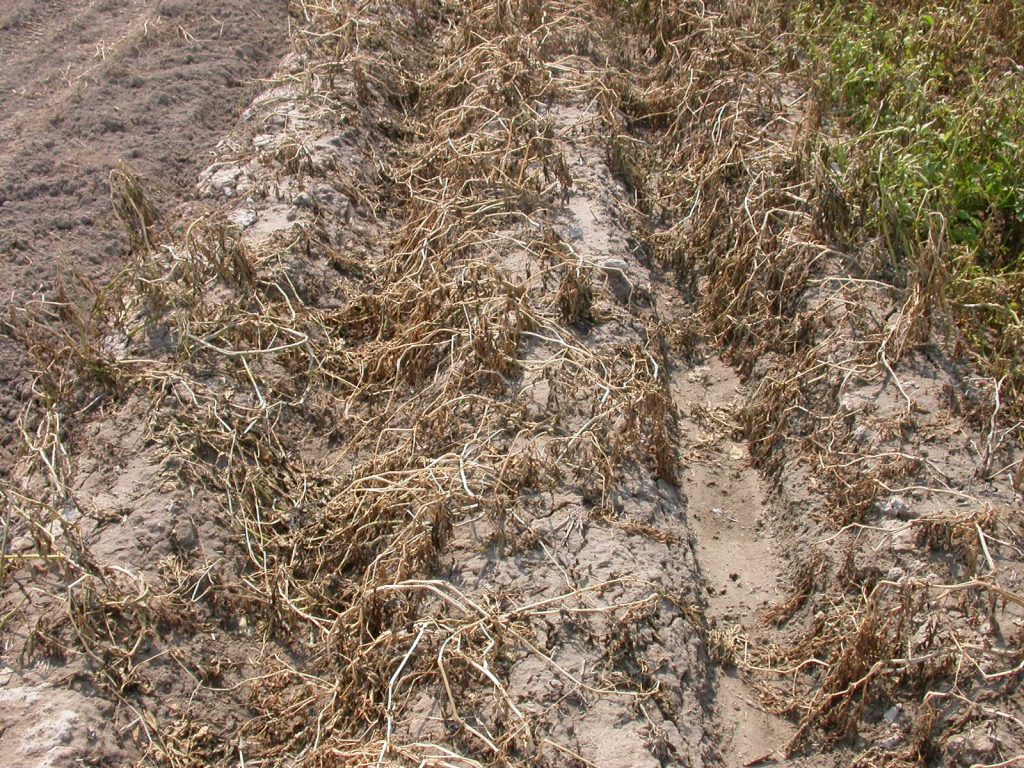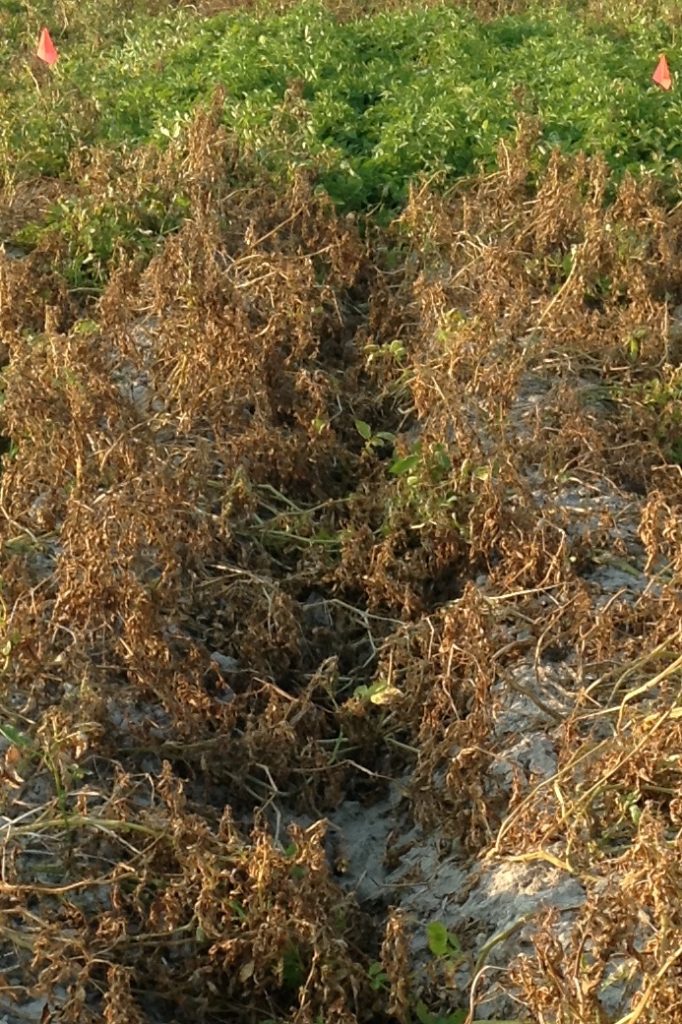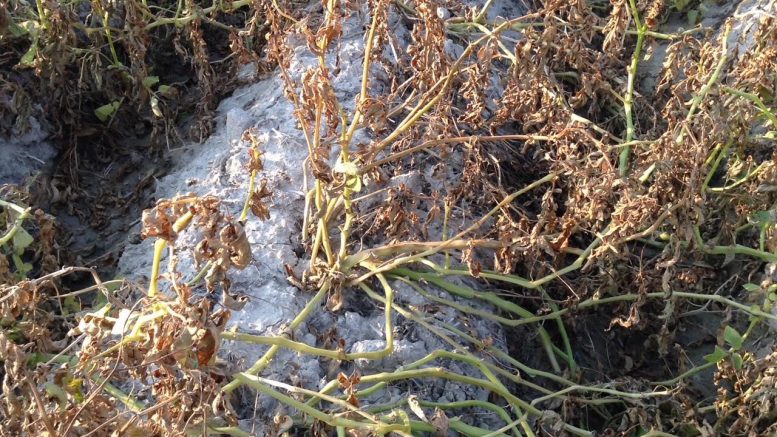|
Click to listen to this article
|
Pamela J.S. Hutchinson, Associate Professor and Potato Cropping Systems Weed Scientist, University of Idaho Aberdeen Research and Extension Center. phutch@uidaho.edu
Long ago and far away, most potato growers relied on mechanical vine kill – flailing/chopping and rolling with heavy tires or other implements to break the stems. Late blight and other reasons, such as need for faster kill, have changed grower practices. Now most of the industry relies on chemical vine kill or a combination of chemical and mechanical kill.
Why concerns with late blight? Mechanical methods can break up vines into smaller pieces, sometimes still green, that are likely to remain in the field during harvest. In addition, although there’s not much, if any, hard data at this time to support the idea that late blight spores are distributed with this type of mechanical operation, recommendations are to NOT flail/beat/roll before vine-kill product application. So the question is, regardless of the threat of late blight in the area, does chemical vine kill w/ no mechanical provide enough reduction of plant material for efficient harvest? The answer is yes!
Vine-kill products labeled for use in potatoes include:
- Reglone® and other trade names (diquat)
- Rely® and other trade names (glufosinate-ammonium)
- Aim® (cafentrazone-ethyl)
- paraquat (various trade names)
- Vida® (pyraflufen-ethyl)
- sulfuric acid (usually 93 or 97% concentration; by custom applicator and in certain states only).
University of Idaho vine-kill trial results have shown the following:
sulfuric acid > paraquat/Reglone > Rely + Aim or Vida (or Reglone) > Rely or Aim or Vida alone.
- “Fast kill” attained with sulfuric acid.
- Can provide 95 to 100% desiccation of leaves and stems as quickly as three days after application.
- “Fast- to moderately-fast kill” – Reglone.
- 95% or greater desiccation of leaves and 90% or greater stem desiccation by 1 wk after application.
- Results with paraquat have been similar…(note that paraquat cannot be used for potatoes going into storage or used for seed).
- Rely can provide approximately 90% leaf desiccation by 1 wk after application, however, stems may only be 70% or less desiccated at that time.
- The interesting characteristic of Rely is that stems tend to stay green longer with this product than the others labeled for use in potatoes.
- When Rely was tank-mixed with Aim or Vida (or a lower rate of Reglone than what is made in a stand-alone treatment), then speed of stem desiccation increased to as much as 90% visible by 1 wk after treatment.
Chemical vine kill can also provide control of weeds present at the end of the season. You all know that sense of dread when you’ve got the potato vines killed but the field seems to remain green because of that pesky hairy nightshade. BTW, that’s how this weed scientist first got involved in vine-kill research – potato growers wanted to know what to do with that late-season hairy nightshade. That weed can germinate and grow the entire season, even under the potato canopy. The green material can reduce harvest efficiency and nightshade sp. can provide an alternative source/host for late blight. However, with care, nightshades and other weeds can be killed at vine-kill time! Unfortunately, even though hairy nightshade is killed at this time, research has revealed that regardless of chemical, hairy nightshade seed viability is not reduced more that 5%l.
Sometimes, a second application may be needed 5 to 10 days after the first in order to get satisfactory vine kill e.g. some potato varieties have heavy foliage; weeds are present.
In general, application timing is recommended to occur at the beginning of natural senescence. In addition:
- In order to thoroughly cover and penetrate foliage, some products require 20 to as much as 50 gallons per acre carrier volume. A dense potato canopy would require volume in the upper range.
- Make sure to include the adjuvants required e.g. ammonium sulfate with Rely; nonionic surfactant with diquat;
Always read the various labels for use rates and timing, cautionary remarks, etc.
So, there you have it…vine kill can be achieved with some currently available great products and at the desired speed of kill for your situation.


Application timing – less than 5% natural senescence (95% green leaves and stems).
Variety – Russet Burbank.
Spray volume – 20 gal per acre water.
One week after application of 1 qt/A Reglone + nonionic surfactant (NIS). Note: most of the leaves and stems are desiccated/brown.


